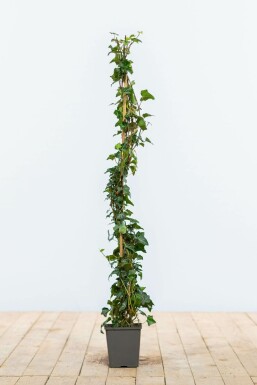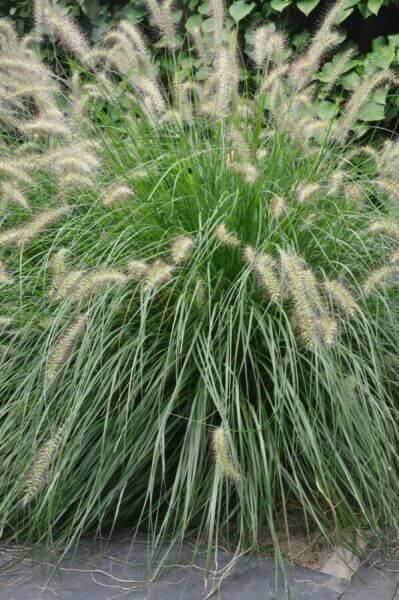Hedge Plants For Salt Tolerance
Improve your garden's attraction with lavish hedge varieties such as Yew (Taxus), Thuja, Laurel, Photinia, and Bamboo, commemorated for their structural integrity and ecological benefits.
Yew and Thuja offer evergreen protection and winter strength, while Laurel offers fast development and broad, fragrant leaves.
Photinia includes seasonal appeal with its dynamic red foliage, and Bamboo lends a low-maintenance, tranquil ambiance.
These hedges improve air quality, lower noise, and develop tranquil, private areas.
Appropriate planting, spacing, and upkeep make sure energetic growth and ecological consistency.
Check out how these lush ranges can raise your garden's charm and wellness.
Key Takeaways
Transform Your Garden With Lush Hedge Varieties
- Select Yew for its thick, evergreen development and unrivaled longevity.
- Select Laurel for its quick development and broad leaves, ensuring quick privacy.
- Select Photinia for its dynamic seasonal foliage, which turns a striking dark red.
- Make use of Bamboo for a low-maintenance, winter-hardy hedge with visual appeal.
- Area plants 2-3 per meter and prune regularly for optimal growth and health.
Popular Hedge Plants
When transforming a garden with rich hedge ranges, it's necessary to think about popular hedge plants such as Yew, Thuja, Laurel, and Photinia due to their unique characteristics and benefits.
Yew (Taxus) is highly esteemed for its longevity and dense, green growth, making it a prime choice for enduring landscapes.
Thuja is noted for its evergreen foliage and robust winter season strength.
Photinia includes seasonal vibrancy with red leaves that darken with time, producing dynamic visual appeal.
Laurel offers quick development and fragrant, broad leaves, perfect for fast privacy.
In Addition, Bamboo is an exceptional option for ambiance, offering a low-maintenance, winter-hardy option that boosts the garden's aesthetic with its elegant, swaying walking canes.
These selections deal with a range of horticultural needs and preferences.
Benefits of Garden Hedges
Garden hedges use a plethora of advantages, making them a valuable addition to any landscape. These natural barriers are cost-efficient to execute and supply considerable wind defense, improving air blood circulation and adding to noise decrease. The dense foliage of hedges like Thuja and Beech makes sure personal privacy by obstructing presence, creating a serene and secluded environment.
Hedges also play a crucial role in microclimate policy, providing a steady environment that promotes plant development and minimizes temperature variations. Their intricate leaf structures filter contaminants, enhancing air quality and adding to a much healthier garden ecosystem.
Moreover, hedges excel in sound decrease, soaking up and deflecting acoustic waves to lower ambient sound levels. This double functionality of offering both visual and acoustic privacy enhances the total serenity and visual appeal of any garden.
Planting and Upkeep Tips
For a successful hedge, meticulous preparation of the planting area is crucial. Ensure the soil has proper pH and drainage to support strong root development.
Space the plants appropriately for the chosen species. Water the hedge often during its initial growth phase, adjusting as required with seasonal modifications.
Carry out a organized bug control and illness avoidance technique, using chemical or natural treatments when essential. Frequently examine for aphids, mites, and fungal infections.
Apply mulch to retain wetness and reduce weeds. Seasonal pruning promotes dense growth and air blood circulation, vital for plant health.
Following these guidelines will help you cultivate a lively, properly maintained hedge that enhances the appeal of your garden.
Spacing and Trimming Guidelines
Spacing and Cutting Standards
Appropriate spacing and trimming are vital for cultivating healthy, aesthetically appealing hedges. Sufficient spacing makes sure each plant gets adequate nutrients, light, and airflow.
Follow these standards for optimal hedge upkeep:
- Spacing: Position hedge plants 2-3 plants per meter to encourage robust development.
- Pruning Techniques: Routine pruning is vital for maintaining preferred hedge height and shape. Trim brand-new growth in summer and cut down older wood during winter season.
- Seasonal Care: Adjust cutting schedules and methods according to seasonal requirements to make sure plant health.
- Hedge Height: Regularly display and cut to preserve the wanted hedge height and achieve uniform aesthetics.
Following these steps will guarantee your hedge grows, improving both the appeal and performance of your garden.
Picking the Right Hedge
Choosing the Right Hedge
Picking the proper hedge involves assessing elements such as fully grown height, foliage density, and environmental durability. Effective hedge plant choice requires understanding each species' development attributes and site-specific adaptability.
For instance, Yew (Taxus) offers exceptional longevity and thick development, while Thuja is notable for its winter durability. Furthermore, thinking about upkeep requirements is vital; fast-growing types like Laurel or Privet need routine cutting, whereas low-maintenance alternatives like Bamboo or Ivy may be more suitable for those looking for very little maintenance.
Environmental elements such as soil type, light accessibility, and moisture conditions ought to also guide the selection process. This mindful technique makes sure the selected hedges will grow, supplying both functional and visual advantages to the garden landscape.
Delivery and Planting Recommendations
To ensure your hedge plants thrive, they need to be provided by specialized couriers and planted promptly upon arrival.
Follow these essential actions for successful planting:
- Soil Preparation: Enrich the soil with raw material to improve drainage and nutrient material.
- Planting Depth: Produce a trench two times the width and equivalent to the depth of the root ball.
- Watering Techniques: Water completely after planting, keeping the soil regularly damp but not saturated.
- Mulching: Use a layer of mulch to retain wetness and suppress weeds.
Customer Assistance and Service
Offered the vital function of timely assistance in horticultural pursuits, our consumer assistance team is offered 6 days a week through telephone, email, and social media to use professional guidance and promptly deal with any issues. Their commitment to fast response times makes sure customer fulfillment by fixing queries associated with plant health, optimal planting techniques, and upkeep schedules.

Within 48 hours
This extensive support group, strengthened by an outstanding 9.3/ 10 client score, highlights our commitment to enhancing the gardening experience for every client.
Regularly Asked Concerns
For How Long Does It Consider Hedge Plants to Develop?
Hedge plants normally need one to three years to become fully developed, with the specific period differing by species and growing conditions.
Effective care throughout this important period is necessary for robust development. Constant watering, watchful weed control, and appropriate fertilizer application are essential in promoting strong root advancement.
For example, fast-growing species like Laurel may develop faster, while slower-growing ranges such as Yew might take longer. Thorough upkeep accelerates the establishment procedure, resulting in healthy and dense hedges.
What Are the Best Hedge Plants for Personal Privacy?
The question of the finest hedge plants for privacy includes examining evergreen and deciduous choices.
Evergreen hedges like Thuja, Laurel, and Cypress provide year-round protection, guaranteeing continuous personal privacy.
In contrast, deciduous hedges such as Beech provide seasonal privacy, shedding leaves in chillier months.
Key maintenance pointers for privacy hedges consist of regular cutting, fertilizing in spring, and proper spacing-- normally 2 to 3 plants per meter.
Furthermore, consistent watering and thorough weed removal are vital for promoting healthy, dense development.
Can Hedge Plants Draw In Wildlife to My Garden?
Yes, hedge plants can attract wildlife to your garden by supplying essential benefits like shelter, food, and nesting websites, thus boosting local biodiversity. For circumstances, yew, holly, and laurel are outstanding for bring in birds, while ivy supports a variety of pests.
Nevertheless, it is necessary to keep in mind that there are some drawbacks, such as increased maintenance to handle pests and regular maintenance. Thoroughly selecting and preserving hedge ranges can help balance these drawbacks and benefits, eventually cultivating a vibrant and sustainable environment in your garden.
Exist Any Flowering Hedge Plants Available?
Yes, there are flowering hedge plants offered that can improve the appeal of your garden.
For instance, Elaeagnus, also known as Olive Willow, produces fragrant white flowers in the fall, including a touch of sophistication.
Photinia, another popular option, showcases vibrant red leaves that mature into a rich green, creating a dynamic visual impact throughout the seasons.
To guarantee these plants prosper, it's vital to practice correct pruning techniques and seasonal maintenance, such as trimming new development in the summer and cutting back in the winter season.
These measures will assist keep the health and visual appeal of your blooming hedges.
How Do I Avoid Bugs in My Hedge Plants?
To avoid bugs in hedge plants, utilize natural insect control techniques and keep proper hedge care. Introduce advantageous insects like ladybugs, which victimize hazardous pests, to develop a balanced ecosystem.
Frequently examine your hedges for signs of invasion and quickly eliminate any afflicted parts to prevent the spread. Ensure the health of your hedges by using balanced fertilizers and offering adequate water.
Use mulching to retain soil wetness and correct spacing to minimize plant stress and promote robust growth. These practices collectively assist in decreasing bug problems and maintaining a healthy hedge.
Conclusion
In essence, choosing the ideal hedge ranges such as Yew, Thuja, and Laurel can transform any garden into a tranquil sanctuary. These plants supply year-round greenery, enhance visual appeal, and deal practical advantages like sound reduction and wind defense.
Appropriate planting methods, accurate spacing, constant watering, and seasonal trimming are vital for optimum growth.
Reputable delivery services and skilled customer assistance guarantee a seamless experience from purchase to planting, making it easier than ever to elevate your outside space.
Garden hedges use a wide variety of benefits, making them an important addition Browse around this site to any landscape. These natural barriers are cost-effective to carry out and provide substantial wind protection, boosting air flow and contributing to sound reduction. The thick foliage of hedges like Thuja and Beech ensures personal privacy by obstructing exposure, developing a secluded and peaceful environment.

Pruning Techniques: Routine pruning is necessary for preserving desired hedge height and shape. Cut brand-new growth in summer and cut back older wood throughout winter.